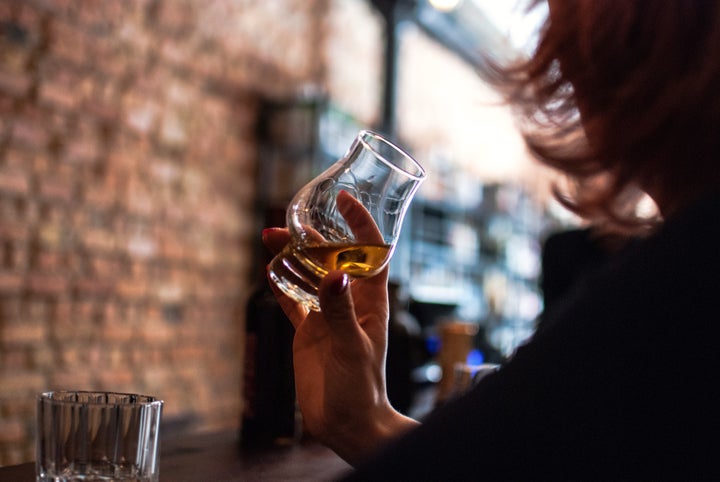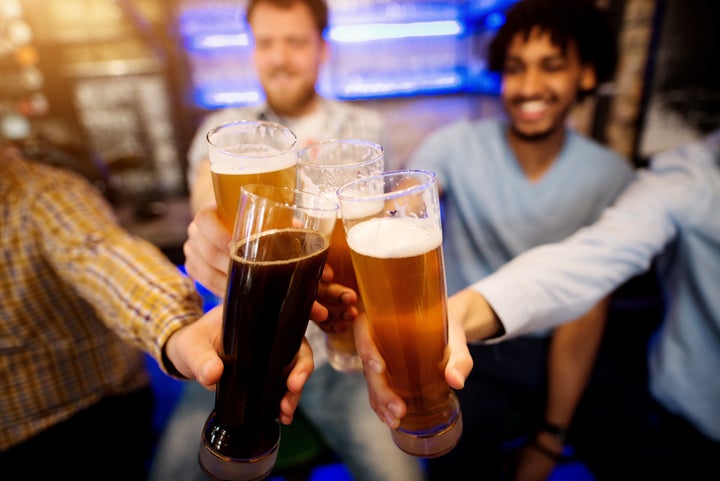
A good portion of people would classify themselves as social drinkers. They don’t typically drink on their own but do so with friends, family, colleagues and so on. The only problem with this classification? The word “social” can vary from person to person.
One person’s social drinking might be a glass of merlot with friends once or twice a week. Another person may consider it four or five beers over the course of a day at a birthday party. A different individual may consider it two gin and tonics at happy hour on Tuesday and Thursday and then a heavy night out on the weekend.
So what’s the truth? When does social drinking become more like problem drinking? What exactly is considered “normal?” In some cases, it depends who you ask. This is what experts have to say on the subject:
The (Sometimes Intentionally) Murky Definition Of Social Drinking
There’s some disagreement about what’s regarded as a normal amount of drinking, according to Stephen Strobbe, a clinical associate professor at Michigan Medicine’s department of psychiatry and a specialist in addiction. “Social drinking” is perhaps a purposely vague term.
“It’s based, at least in part, on what’s accepted within a certain group or culture,” he said. “Even for a given individual, what’s acceptable in one setting may not be OK in another.”
Normal social drinking patterns are often context-appropriate, can vary from one individual to the next and are probably dictated by social norms, said Brad Lander, an addiction medicine specialist at The Ohio State University Wexner Medical Center.
“What may be normal on New Year’s Eve may not be normal on a business luncheon,” he said. “What may be normal for a fraternity kegger may not be normal for romantic dinner.”
What may be normal on New Year’s Eve may not be normal on a business luncheon. What may be normal for a fraternity kegger may not be normal for romantic dinner.
Brad Lander, addiction medicine specialist at The Ohio State University Wexner Medical Center
Another key component of social drinking is knowing how much is too much for you, and staying within those boundaries.
“Social drinking does not interfere with your life,” said Lander. “That is, it doesn’t cause problems with work or home responsibilities, family, health, social relationships or create legal or financial problems.”
Strobbe said the word best associated with social drinking should be moderation.
“Social drinking implies moderation,” Strobbe said, “as a means of enhancing — not disrupting — other activities.”
However, he added that it’s easy to dance around that line. “In American culture, it’s safe to say that if extreme intoxication is the goal or outcome, then we’ve crossed that line,” he said.
When Social Drinking Becomes Problematic
If you’re drinking socially, but a lot, you might be entering into problematic territory. You should be wary if you cross the line into what’s called “heavy drinking,” said Lander. This is more than four drinks a day or more than 14 drinks in a week for men, and more than three drinks a day or more than seven drinks a week for women, he said.
“Binge drinking is also unhealthy, defined as reaching a blood alcohol level of 0.08. This level can be reached for most people by four or five drinks in a two-hour span,” Lander said. The Substance Abuse and Mental Health Services Administration also defines heavy alcohol use as binge drinking five or more times per month.
Aside from the number of drinks you might be consuming, there are many signs you may be in problem drinking territory, according to Lander. And it’s those you should really pay attention to.
These signs include drinking when you have reasons not to, like when you’re taking a medication, feeling guilty about your alcohol consumption, and failing at goals to cut back or stop drinking. Deceiving others about your drinking is also a red flag, like lying about how much you drink, sneaking drinks, hiding alcohol or making excuses or reasons to go drink.
“If you are confronted by someone about your drinking, statistics say this is a very strong sign [you’re dealing with a problem drinking],” Lander added.
Feeling shaky or anxious after not drinking for around 12 hours is a sign of “entering a critical phase of alcoholism,” said Lander.
Strobbe echoes that sentiment, adding that “physical symptoms of withdrawal, like shaking or sweating when it gets to be too long between drinks” typically arise in later stages of alcoholism. He said severe withdrawal may require medical attention.

How To Cut Back On Drinking Or Find Help
If you think you might be dealing with more problematic drinking habits, Strobbe suggests reaching out to a professional or trying some goal-setting to help you scale back.
“There’s a lot of great information available on the website for the National Institute on Alcohol Abuse and Alcoholism,” he said. “And now, there are also phone and computer apps available to assist you in meeting your goals.”
Lander added that staying conscious about your consumption can also help. Self-awareness can allow for pause and let you examine why you’re reaching for that next round at the bar with your friends.
“A lot of drinking is ‘thoughtless,’ so simply asking yourself, ‘Do I really want another drink?’ can help,” Lander said. “At social gatherings, drink some nonalcoholic as well as alcoholic beverages; don’t forget to eat, drink plenty of water, and stand up to peer pressure to drink.”
A lot of drinking is ‘thoughtless,’ so simply asking yourself, ‘Do I really want another drink?’ can help.
Brad Lander
If you’re struggling with social pressure, it might also be helpful to hang around friends who don’t drink at all. It’s also important that you practice other healthy lifestyle habits, Strobbe said.
“Monitor the number of standard drinks you take in over time, set limits, practice refusal skills ― and engage in other, healthy behaviors, such as exercise, yoga or meditation,” he said.
For many people, these strategies will be enough to cut back their alcohol intake. But for some, it won’t ― and that’s when a doctor needs to get involved.
“If you are having trouble initiating and maintaining reduced drinking goals, or people close to you are expressing concern or complaints about your drinking, then these are signs that additional help may be needed,” Strobbe said. “Have a talk with your primary care provider, who should be asking you about your drinking periodically and can help point you in the direction of a number of effective, evidence-based treatments, including talk therapy or medications to reduce cravings or urges to drink.”
And most importantly, know that it’s totally OK to ask for help.
“Don’t let embarrassment, guilt or stigma keep you from getting the help that you deserve,” Strobbe said. “Alcohol-use disorders are treatable medical conditions.” Making changes early may help you stay ahead of life-altering issues prompted by alcohol abuse, he added.
CORRECTION: A previous version of this story included a quote that misstated the National Institute on Alcohol Abuse and Alcoholism’s listed definition of heavy alcohol use.
Need help with substance abuse or mental health issues? In the U.S., call 800-662-HELP (4357) for the SAMHSA National Helpline.
